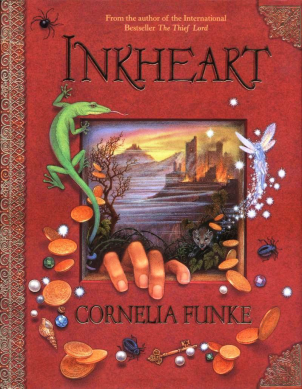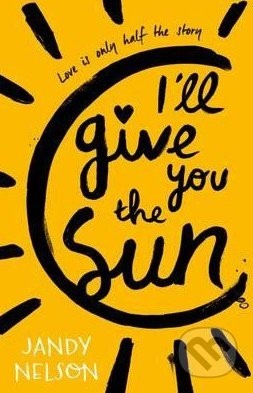
Handbook-subarticles
Book title
Mona
Author
Dan T. Sehlberg

Bibliographic information
Publisher: Spiderline
ISBN 1770893938
Links (adaptations, reviews, full texts etc.)
Theme
A story of a man who tries to save his wife’s life. He shows commitment, love and bravery.
Short summary
Eric Söderqvist, professor at the Royal Institute of Technology in Stockholm, has invented Mind Surf: a thought-controlled system that allows people to browse the web. Samir Mustaf is a former MIT professor whose daughter Mona was killed by a bomb five years earlier. He has just developed the most sophisticated computer virus the world has ever seen, for the purpose of a cyber-attack against Israel’s financial system. Samir Mustaf is a former MIT professor whose daughter Mona was killed by an Israeli cluster bomb five years earlier. He has just developed the most sophisticated computer virus the world has ever seen, for the purpose of a cyber-attack against Israel’s financial system. Eric’s wife Hanna falls into a coma — struck by an aggressive and previously unknown virus — after having tested her husband’s invention. The doctors are at a loss. Although everyone around him thinks he’s gone mad, Eric is convinced that his wife has been infected by a powerful computer virus known as Mona, and that the only way he can save her is by tracking down its creator.
Why is the story appropriate for the targeted groups of RSP readers?
- It reflects readers´ interests
- It’s highly motivational
- It reflects political/historical moment
- Recommendations and the report emerged from the survey results
- Refers to actual migrant situation
- It promotes understanding of cultural diversities and heritage
What are the distinguished readers interests reflected by this book/story?
-
Why is this story motivational for the pupils?
The story describes how technologies can be linked to our brains and what damage it might cause and thus warns us against misusing it.
Is there a historical, political, multi/inter cultural, migrant or similar context recognized in this book/story?
Yes - It describes the conflict between Israel and Lebanon and its consequences on common people.
Is there a principle of inclusion reflected in this book/story and does it promotes understanding of cultural diversities and heritage?
The importance of the cultural and religious belonging.
Title of Activity
Pantomime a story
Description of educational activity
Duration: 130 minutes
Pupils’ age: 15-19
Organization of the class of pupils: group work
The aim of the lesson: The aim of the lesson is to improve the reading literacy of the students. To improve their reading comprehension and to be able to find those ideas of the excerpts which will help them to mime their part of the excerpt so that they can put together the storyline.
Students will gain knowledge and understanding of identifying supporting details and examples in non-fiction, fantasy text.
Support materials:
Excerpt cut into five parts. Anything students can find to help them mime their part.
Excerpts from the book Inkheart: Chapter 56 The Shadow.
- Part 1: page 271 (In books hatred.......).....page 272 ( - and Meggie´s reading.)
- part 2: page 272 (Meggie felt...) ...page 273 ( ...the ticking)
- part 3: page 273 (A very fine speech… - Meggie obeyed.)
- part 4: page 273 (Hastily… )....page 274 ( ...fear.)
- part 5: page 274 (Meggie bent over the book … page 275 (.... in the wind)
Activities:
- The students are divided into groups of 4-5.
- Each group gets a part of the excerpt.
- The students have to read their part.
- Then each group works separately in a different classroom or any room where they practise miming their part of the excerpt.
- After practising members of each group mime their part.
- After seeing all groups students discuss what happened in each performance and try to put the storyline in the correct order.
- They have to justify their decision.
- Discussion: The students are enabled to interact, to discuss within the group, to argue for or against an opinion.
Evaluation and assessment method:
- Throughout the lesson, ensure that your students are backing up their choices with accurate supporting details.
- Teacher's observations of student preparedness, student work samples, and participation in group activities.
Effect of the activity on RSP reading: Practices that support students´ choice, collaboration, and shared control of learning outcomes can be linked to self-expressed interest in reading and engaged reading behaviours.Teachers can organize reading instruction to develop self-efficiency, competence, and engagement in teenage students.
Connection to curriculum
Grade: 2nd grade of bilingual studies
Bilingual curriculum: the study of literature is focused during the second year on reading comprehension of literary texts which are based on the interests of the students which involves fantasy, too. The aim of the curriculum is to teach students to work with the text, to analyse the texts. Understanding texts, weighing their merits, and utilizing the information they offer are skills that teenagers draw on throughout the curriculum.
Knowledge:
- Develop reading fluency
- Improve reading comprehension
- Organise information in a specific way
Skills:
- Use performing skills
- Distinguish reality and fantasy
- Make predictions
- Compare and contrast
- Summarize
- Work effectively in groups, respecting others
Competences:
- Make connections between fiction and real life or personal experiences
- Be able to visualise material read
- Follow specific instructions and conventions
- Evaluate evidence
- Support and justify an opinion
Bibliographic reference to be used during the activity
Cornelia Funke
Inkheart
Publisher: Chicken House Scholastic Inc.
ISBN: 9780439709101
Page count: 534
Year of issue: 2007

Results
The expected outcomes of the lesson are:
- The students will be able to understand the important parts of the excerpt which they will demonstrate by miming and subsequently to work out the storyline
- To connect ideas and themes across texts.
- To offer observations, make connections, speculate, interpret, and raise questions in response to the excerpts.
Recommendations
Both the teaching method and the text can help in increasing students’ interest in reading. This text promotes love towards books which can encourage students to read more. The teacher monitors the students so as to make sure they cooperate effectively.
The volume of given fragments of books can be adapted to the
potential of a group - fragments can be shorter - by cutting less important paragraphs, or be expanded to additional fragments of the same novel.
Book title
Inkheart
Author
Cornelia Funke

Bibliographic information
Publisher: Chicken House books
ISBN: 9781908435118
Links (adaptations, reviews, full texts etc.)
https://www.chickenhousebooks.com/books/inkheart-trilogy-book-1-inkheart/
http://www.shmoop.com/inkheart/themes.html
https://www.goodreads.com/book/show/28194.Inkheart
Theme
A book about books
Short summary
A young girl finds out her father has an extraordinary talent to read characters out of their books and must try to stop a freed villain from destroying them all, with the help of her father, her aunt, and a storybook's hero.
Why is the story appropriate for the targeted groups of RSP readers?
- It reflects readers´ interests
- The recommendation and the report emerged from the survey results
What are the distinguished readers interests reflected by this book/story?
-
Why is this story motivational for the pupils?
It is the story about a young girl who lost her mum very early and has to cope with a special talent her father and she have. She has to overcome a lot of obstacles and be strong and brave enough to get her mum back. The book can be motivational and help students understand how important it is to believe in themselves in order to overcome obstacles they may encounter in their life.
Is there a historical, political, multi/inter cultural, migrant or similar context recognized in this book/story?
No.
Is there a principle of inclusion reflected in this book/story and does it promotes understanding of cultural diversities and heritage?
The principle of inclusion can be seen throughout the book as it shows the importance of the family and friends in our life.
Title of Activity
Book code
Description of educational activity
Duration: 90 minutes
Pupils’ age: 15-19
Organization of the class of pupils: group work/ it must be carried out in a library
The aim of the lesson:
The main target of these lessons is to increase the interest of students in libraries. To teach them how to search in libraries and how to utilize libraries during the studies.The aim of the lesson is to improve the reading literacy of the students. To improve their reading comprehension and to be able to find connections between different books. Another goal is to make the pupils develop their skill of searching for clues. To teach students reading for the gist, skimming and scanning the text. Using decoding and vocabulary strategies. Students will gain knowledge and understanding of connecting ideas and themes across texts.
Support materials:
- Worksheet 1 with hints.
- Worksheet 2 with tasks. (I´ll give you the sun)
- Excerpts from the book I´ll give you the sun by Jandy Nelson (Page 173, I stop. “Noah …. I thought I sucked!)
The books involved:
- The fault in our stars – John Green ( page 55)
- Anne Frank - THE DIARY OF A YOUNG GIRL – Anne Frank (page 8)
- Harry Potter and the Philosopher´s stone – J.K.Rowling ( page 50)
- Inkheart – Cornelia Funke (page 58, chapter 12)
- The Lord of the rings - J. R. R. TOLKIEN (page 85, chapter 8)
- City of bones - Cassandra Clare (page 268)
- Clockwork orange – Anthony Burgess (page 9)
- Stardust – Neil Gaiman (page 10)
- Twilight - Stephenie Meyer (page 220)
Activities:
- The students are divided into groups of 4-5.
- Each group gets a set of worksheets.
- The groups compete with each other. The main goal is to solve the Book code in the shortest time.
- They have different hints in the worksheets, which they have to find and solve.
- They have to proceed step by step to get from one book to another. There are 10 books involved. In these books they have to find the hint for the next book.
- After finding the last book, the students get a worksheet with other activities where they have to discuss and solve the tasks in pairs. Their first task is to complete an internal monologue of the „concerned person“. Their 2. Task is to complete the task of the narrator, what Noe is thinks at that moment. 3. task is to replace the expression „ he has gone mad“ with an idiom and the last task is to write a short dialogue about: what could the protagonist mess up. (at least 3 replicas)
- Discussion: The students are enabled to interact, to discuss within the group, to argue for or against an opinion.
Evaluation and assessment method:
Throughout the lesson we can see whether the students are successful with their reading comprehension as all the activity is focused on the ability to scan the text, skim the text or to read for the gist. If the students are not able to utilize these abilities they are not able to get further in this activity. If we can see that the students struggle the teacher should provide some help.
The effect of the activity on RSP reading:
The RSP readers learn how to scan the text and how to recognize names and words in context. They learn searching for particular information, or checking to see whether a passage is relevant. They recognize relevant facts and ideas; classify information. The students learn how to orientate in libraries, how to search information and how to benefit from libraries.
Connection to curriculum
Grade: 1st and 2nd grade of bilingual studies
Bilingual curriculum: The study of literature is focused during the second year on reading comprehension of literary texts which are based on the interests of the students which involves fantasy, high fantasy, dirk fantasy, urban fantasy, literature with boy or girl protagonists. The aim of the curriculum is to teach students to work with the text, to analyse the texts. The aim is to practise the following reading methods: Skim reading/ browsing, Speed Reading, reading for the gist, Scanning.
Knowledge:
- Develop reading methods, speed reading, reading for the gist, scanning and skimming.
- Understand how the interaction of reader, text, and lesson impacts comprehension and student engagement.
- Improve reading comprehension.
- Organise information in a specific way.
Skills:
- Evaluate reading progress and apply goal setting strategies and monitor progress toward meeting reading goals
- Utilizing libraries for searching information.
- Learning how to search in libraries.
- Compare and contrast
- Summarize
- Work effectively in groups, respecting others
Competences:
- Synthesize information from a variety of sources
- Continue to use resources to increase vocabulary and gain deeper understanding by using context clues
- Follow specific instructions and conventions
- Evaluate evidence
Bibliographic reference to be used during the activity
Jandy Nelson
I'll Give You the Sun
A Game of Thrones
Publisher: Walker books
ISBN: 9781406326499
Page count: 368
Year of issue: 2015

Digital sources
Nelson's novel is a twin and family relationship story at its heart, but it also intricately explores themes of art, fate, and identity, often with the artwork replacing some of the inner dialogue. I'll Give You the Sun is published in 25 countries, and is optioned by Warner Bros for a film to be written by Natalie Krinsky and produced by Denise Di Novi and Allison Greenspan.
Results
The expected outcomes of the lesson are:
- The students will be able to understand through skimming, scanning, reading for the gist and speed reading.
- To be able to search information in libraries, to gather information as fast as possible.
- To offer observations, make connections, speculate, interpret, and raise questions in response to the excerpts.
Recommendations
Both the teaching method and the text can help in increasing students’ interest in reading. This text promotes a male and a female character with whom boys and girls can identify. The teacher monitors the students so as to make sure they cooperate effectively. The volume of given fragments of books can be adapted to the potential of a group - fragments can be shorter - by cutting less important paragraphs, or be expanded to additional fragments of the same novel.
As it is a competition and usually libraries do not offer more volumes at the same place, we suggest to make it as a competition where the groups will have a different starting time and they will be timed. While the groups are waiting for their turns the teachers can prepare some tips how to search information and the libraries can show their sources and the possibilities how to find the relevant sources.
Book title
I´ll give you the sun
Author
Jandy Nelson

Bibliographic information
Publisher: Penguin Young Readers Group
ISBN 978-1-101-59384-4
Links (adaptations, reviews, full texts etc.)
- http://jandynelson.com/books/ill-give-you-the-sun/
- http://www.goodreads.com/book/show/20820994-i-ll-give-you-the-sun
Theme
A story of the twins who go through the first love, loss, disappointment and grief.
Short summary
Jude and her twin brother Noah are inseparable and love each other unconditionally. The two of them are completely different. Noah is a shy boy who loves painting while Jude is an outgoing and popular young girl. A few years later, however, they barely talk to each other. After an unfortunate accident they live different lives but still care about each other, they only have to find the way back.
Why is the story appropriate for the targeted groups of RSP readers?
- It reflects readers´ interests
- The recommendation and the report emerged from the survey results
- It reflects political/historical moment.
- It’s highly motivational
What are the distinguished readers interests reflected by this book/story?
-
Why is this story motivational for the pupils?
The story depicts the lives of two teenagers going through the situations like the first love, loss, grieve, anger and disappointment.
Is there a historical, political, multi/inter cultural, migrant or similar context recognized in this book/story?
No.
Is there a principle of inclusion reflected in this book/story and does it promotes understanding of cultural diversities and heritage?
The story emphasizes the importance of friendship and family ties
Title of Activity
Painted story
Description of educational activity
Duration: 90 minutes
Pupils’ age: 15-19
Organization of the class of pupils: group work
The aim of the lesson: The aim of the lesson is to improve the reading literacy of the students. To improve their reading comprehension and to be able to find connections between the paintings and excerpts. Another goal is to make the pupils develop their skill of using the appropriate language structures to express their opinions.
Students will gain knowledge and understanding of identifying supporting details and examples in non-fiction, fantasy text.
Support materials:
Paintings made by students which depict hidden messages from the excerpts.
Excerpts from the book A game of thrones: excerpts about Bran.
- First excerpt: page 10 (The morning had dawned clear and cold… - a grey dire wolf racing across an ice-white field.)
- Second excerpt: page 14 (“Lord Stark,” Jon said …. - Are you sure you want this?”)
- Third excerpt: pages 54-55 (Finally he got tired of the stick game… - in a way even Robb would never know.)
- Fourth excerpt: pages 58-59 (Everything happened at once then… - Crows circled the broken tower, waiting for corn.)
- Fifth excerpt: pages 111 - 112 (Bran looked at the crow on his shoulder … - “He’s awake, he’s awake, he’s awake.”)
- Sixth excerpt: pages 164 - 165 (Robb stood and pointed at the little man … - He will provide the rest.”)
Activities:
- The students are divided into groups of 4-5.
- Each group gets a set of pictures. Do not reveal at the beginning of the lesson which book you are going to work on. It would confuse them.
- The students have to give each painting a title (key term)
- Then they have to put the paintings into an order to make up a story.
- After creating a story they should introduce their stories.
- Afterwards each group will get the excerpts from the book A game of thrones. Their task is to read these excerpts and they have to find a connection between these excerpts and the paintings.
- They have to justify their decision.
- Discussion: The students are enabled to interact, to discuss within the group, to argue for or against an opinion.
Evaluation and assessment method:
- Throughout the lesson, ensure that your students are backing up their choices with accurate supporting details.
- Teacher's observations of student preparedness, student work samples, and participation in group activities.
- In order to evaluate and assess the effective impact of the previous activities upon the students, they are asked to elaborate a short paper in no more than 5 minutes where they make an In-depth analysis of the main character.
Effect of the activity on RSP reading: Practices that support students´ choice, collaboration, and shared control of learning outcomes can be linked to self-expressed interest in reading and engaged reading behaviours. Teachers can organize reading instruction to develop self-efficiency, competence, and engagement in teenage students.
Connection to curriculum
Grade: 2nd grade of bilingual studies
Bilingual curriculum: the study of literature is focused during the second year on reading comprehension of literary texts which are based on the interests of the students which involves fantasy, too. The aim of the curriculum is to teach students to work with the text, to analyse the texts. Understanding texts, weighing their merits, and utilizing the information they offer are skills that teenagers draw on throughout the curriculum.
Knowledge:
- Understand the stages of development of a hero, common in almost all books
- Develop reading fluency
- Improve reading comprehension
- Organise information in a specific way
Skills:
- Use illustrations
- Distinguish reality and fantasy
- Make predictions
- Compare and contrast
- Summarize
- Work effectively in groups, respecting others
Competences:
- Make connections between fiction and real life or personal experiences
- Be able to visualise material read
- Follow specific instructions and conventions
- Evaluate evidence
- Support and justify an opinion
Bibliographic reference to be used during the activity
George R. R. Martin
A Game of Thrones; Series: A Song of Ice and Fire
Publisher: Voyager
ISBN: 9780006479888
Page count: 864
Year of issue: 2003

Digital sources
A Game of Thrones and the subsequent novels in the A Song of Ice and Fire series have been adapted in a HBO television series (http://screenrant.com/song-of-fire-and-ice/), a comics series(http://www.readcomics.tv/comic/george-r.r.-martins-a-game-of-thrones), several card, board and video games (http://store.steampowered.com/agecheck/app/330840/), and other media.
Results
The expected outcomes of the lesson are:
- The students will be able to understand through illustrations, develop demonstrations.
- To connect ideas and themes across texts.
- To offer observations, make connections, speculate, interpret, and raise questions in response to the excerpts.
Recommendations
Both the teaching method and the text can help in increasing students’ interest in reading. This text promotes a male character with whom boys can identify. The teacher monitors the students so as to make sure they cooperate effectively.
The volume of given fragments of books can be adapted to the
potential of a group - fragments can be shorter - by cutting less important paragraphs, or be expanded to additional fragments of the same novel.
Contact
X gimnazija ''Ivan Supek''
Ul. Vjekoslava Klaića 7
10000
Zagreb
E-mail: partners@handbook4rspreaders.org










